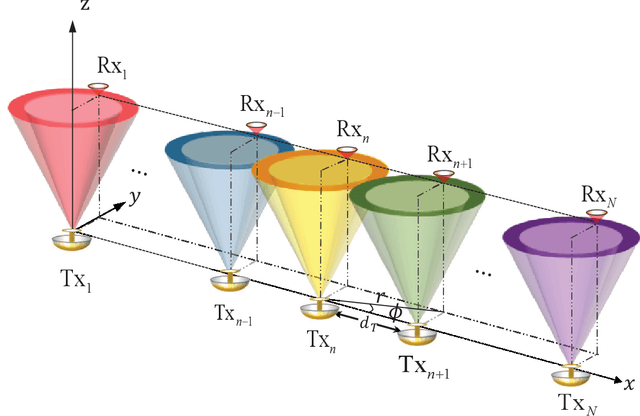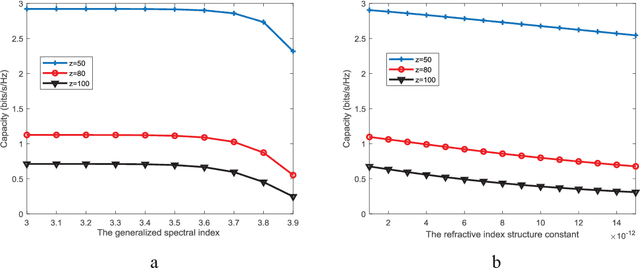Xiaohu Ge
Modeling and Optimization of Transistor Voltage Amplifiers Based on Stochastic Thermodynamics
Apr 27, 2025Abstract:As transistor sizes reach the mesoscopic scale, the limitations of traditional methods in ensuring thermodynamic consistency have made power dissipation optimization in transistor amplifiers a critical challenge. Based on stochastic thermodynamics, a transistor voltage amplifier model is first proposed as a new insight to investigate nonlinear relationships between the power dissipation and voltage gain for complementary symmetric voltage amplifier circuits (CSVACs). Utilizing the proposed model, the phenomenon, i.e., the power dissipation exponentially increases with the increase of voltage gain in CSVACs, is first clarified by an analytical expression to quantify the impact of voltage gain and input signal amplitude on the power dissipation. Considering the characteristic of power dissipation, a new multistage architecture is proposed to reduce the power dissipation in CSVACs. To optimize the power dissipation by adjusting the number of stages and the voltage gain at each stage, an optimal multistage scheme is proposed for multistage CSVACs. Simulation and experimental results show up to 99.36% and 94.59% power dissipation reduction compared with traditional CSVACs by the proposed optimal multistage scheme, respectively.
Prompt-Assisted Semantic Interference Cancellation on Moderate Interference Channels
Aug 08, 2024Abstract:The performance of conventional interference management strategies degrades when interference power is comparable to signal power. We consider a new perspective on interference management using semantic communication. Specifically, a multi-user semantic communication system is considered on moderate interference channels (ICs), for which a novel framework of deep learning-based prompt-assisted semantic interference cancellation (DeepPASIC) is proposed. Each transmitted signal is partitioned into common and private parts. The common parts of different users are transmitted simultaneously in a shared medium, resulting in superposition. The private part, on the other hand, serves as a prompt to assist in canceling the interference suffered by the common part at the semantic level. Simulation results demonstrate that the proposed DeepPASIC outperforms conventional interference management strategies under moderate interference conditions.
Entropy-Based Energy Dissipation Analysis of Mobile Communication Systems
Apr 14, 2023Abstract:Compared with the energy efficiency of conventional mobile communication systems, the energy efficiency of fifth generation (5G) communication systems has been improved more than 30 times. However, the energy consumption of 5G communication systems is 3 times of the energy consumption of fourth generation (4G) communication systems when the wireless traffic is increased more than 100 times in the last decade. It is anticipated that the traffic of future sixth generation (6G) communication systems will keep an exponential growth in the next decade. It is a key issue how much space is left for improving of energy efficiency in mobile communication systems. To answer the question, an entropy-based energy dissipation model based on nonequilibrium thermodynamics is first proposed for mobile communication systems. Moreover, the theoretical minimal energy dissipation limits are derived for typical modulations in mobile communication systems. Simulation results show that the practical energy dissipation of information processing and information transmission is three and seven orders of magnitude away from the theoretical minimal energy dissipation limits in mobile communication systems, respectively. These results provide some guidelines for energy efficiency optimization in future mobile communication systems.
Modelling and Optimization of OAM-MIMO Communication Systems with Unaligned Antennas
Dec 09, 2021



Abstract:The orbital angular momentum (OAM) wireless communication technique is emerging as one of potential techniques for the Sixth generation (6G) wireless communication system. The most advantage of OAM wireless communication technique is the natural orthogonality among different OAM states. However, one of the most disadvantages is the crosstalk among different OAM states which is widely caused by the atmospheric turbulence and misalignment between transmitting and receiving antennas. Considering the OAM-based multiple-input multiple-output (OAM-MIMO) transmission system with unaligned antennas, a new channel model is proposed for performance analysis. Moreover, a purity model of the OAM-MIMO transmission system with unaligned antennas is derived for the non-Kolmogorov turbulence. Furthermore, error probability and capacity models are derived for OAM-MIMO transmission systems with unaligned antennas. To overcome the disadvantage caused by unaligned antennas and non-Kolmogorov turbulence, a new optimization algorithm of OAM state interval is proposed to improve the capacity of OAM-MIMO transmission system. Numerical results indicate that the capacity of OAM-MIMO transmission system is improved by the optimization algorithm. Specifically, the capacity increment of OAM-MIMO transmission system adopting the optimization algorithm is up to 28.7% and 320.3% when the angle of deflection between transmitting and receiving antennas is -24 dB and -5 dB, respectively.
 Add to Chrome
Add to Chrome Add to Firefox
Add to Firefox Add to Edge
Add to Edge